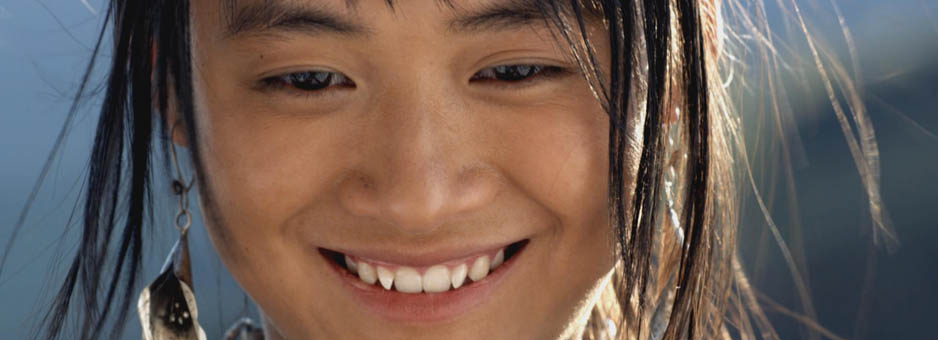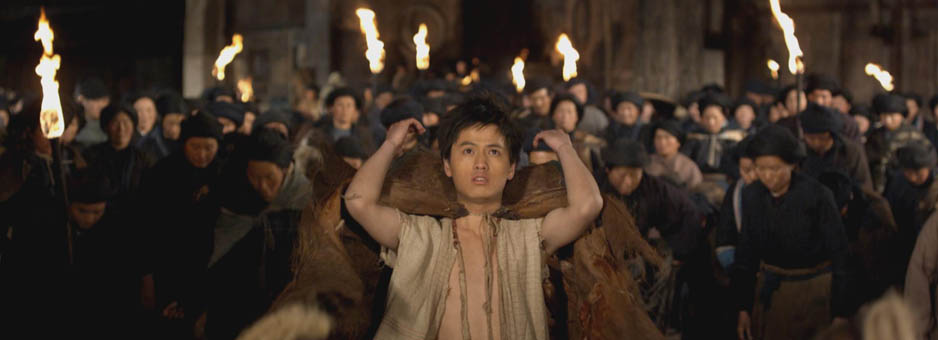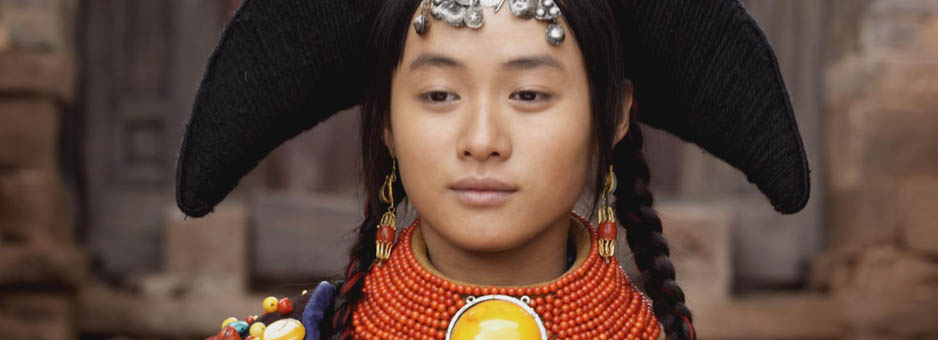Cinderella Story
New Hat uses Baselight to grade Richard Bowen's 'Little Sister'
When Santa Monica boutique post house New Hat decided to build a DI theatre last year, its aim was to provide independent filmmakers with access to the type of high quality post services that were once available only to major studio releases. Judging by its work on Little Sister, the new film from writer/director/cinematographer Richard Bowen, New Hat has hit the mark.
A retelling of the Cinderella story set in ancient China, Little Sister is a gorgeous film of ravishing landscapes, fairy tale costumes and magical storytelling. Shot by Bowen with the RED One camera, the film was one of the first projects to undergo final post in New Hat's new DI theatre. Acclaimed colourist Bob Festa performed the final grade in Baselight working directly with the camera original 4K R3D files in P3 colour space. As a result, the finished film, which screened recently at the Toronto Film Festival, is as visually spectacular as anything you are likely to see screening at the local multiplex.
New Hat's DI theatre provides a cinema-style grading environment and supports a non-linear, file-based workflow. The room is anchored by a Baselight FOUR grading system and also features a 14-foot Stewart screen, a Barco 2K projector and Blue Sky 5.1 audio. Work on Little Sister began by loading the camera original R3D files onto the facility's central SAN. Because Baselight has the ability to read those files natively, no transcoding was necessary and Festa was ready to proceed immediately with the grade.
New Hat chose to grade Little Sister in digital cinema P3 colour space even though Bowen had no immediate plans to produce a film master. The director initially intended to screen the film at festivals while seeking distribution and for that all he required were an HDCAM master, as well as Blu-ray and DVD copies. Still, New Hat reasoned that finishing the film at high resolution would save the director in the long run.
"A lot of post houses would have simply done an HD master pass, but we treated it as if it was going out to film, because one day, it will," explains New Hat technical director Michael Lafuente. "We've done all the work for the film out, so Richard won't have to come back to us to do another correction when he sells the film. It's already taken care of."
Festa had worked with Bowen on numerous previous occasions through the latter's role as a DP for television commercials, but this was the first time that they had collaborated on a feature film. "It was an incredible opportunity for me as a colourist to stretch out," Festa recalls. "The film was shot in China and has a number of classic looks. There are day exteriors, evening exteriors, fantasy sequences, an eclipse sequence, so, clearly, there were a lot of different colour interpretations that went into the project."
Baselight's ability to work with the R3D files natively not only made for a more efficient workflow, it provided maximum creative flexibility, Festa points out. "With Baselight, I could grab the original camera information at the header of each R3D file," he says. "So, not only could I use the full dynamic range of the 4K file, I could re-profile the camera after the fact. I could change the exposure, contrast, colour balance, ISO settings, and so on.
"Richard Bowen is a very talented DP so that was rarely necessary, but if we needed to recapture a sky that was blown out, or if the base black was a little too dark, Baselight allowed us the luxury to alter the camera setting and make the shot more attractive. It's a tremendous benefit and every DP's dream."
The Baselight FOUR in the DI theatre is one of three Baselight systems at New Hat, with the other two installed in grading suites designed primarily for television commercials. All three, however, are attached to the same non-linear network and, using FilmLight's Truelight software, New Hat has the ability to calibrate the monitors in the three rooms with one another. That gives the facility a great deal of flexibility in managing its workflow. With regard to Little Sister, for example, primary grading was conducted in the DI theatre, but ancillary work was performed in one of the television suites.
"We used one of our television studios to produce Blu-ray and DVD deliverables," Festa notes. "Our workflow allows us to reserve our theatre for the heavy lifting film mastering, and do other work offline—that saves overhead."
Festa says that one of the things he likes best about having a DI theatre is that it gives him an opportunity to broaden his relationship with talented filmmakers, many of whom, like Bowen, are making the transition from commercials to features. This project was especially rewarding because it was a labour of love. "We had a great working relationship previously, so it was very easy for us to collaborate on this," Festa says. "It's wonderful to work with an experienced cinematographer like Richard because the images are already beautiful. At that point, it's easy for me to contribute and improvise, and do, what we both wanted to do, which was to craft something really special."






